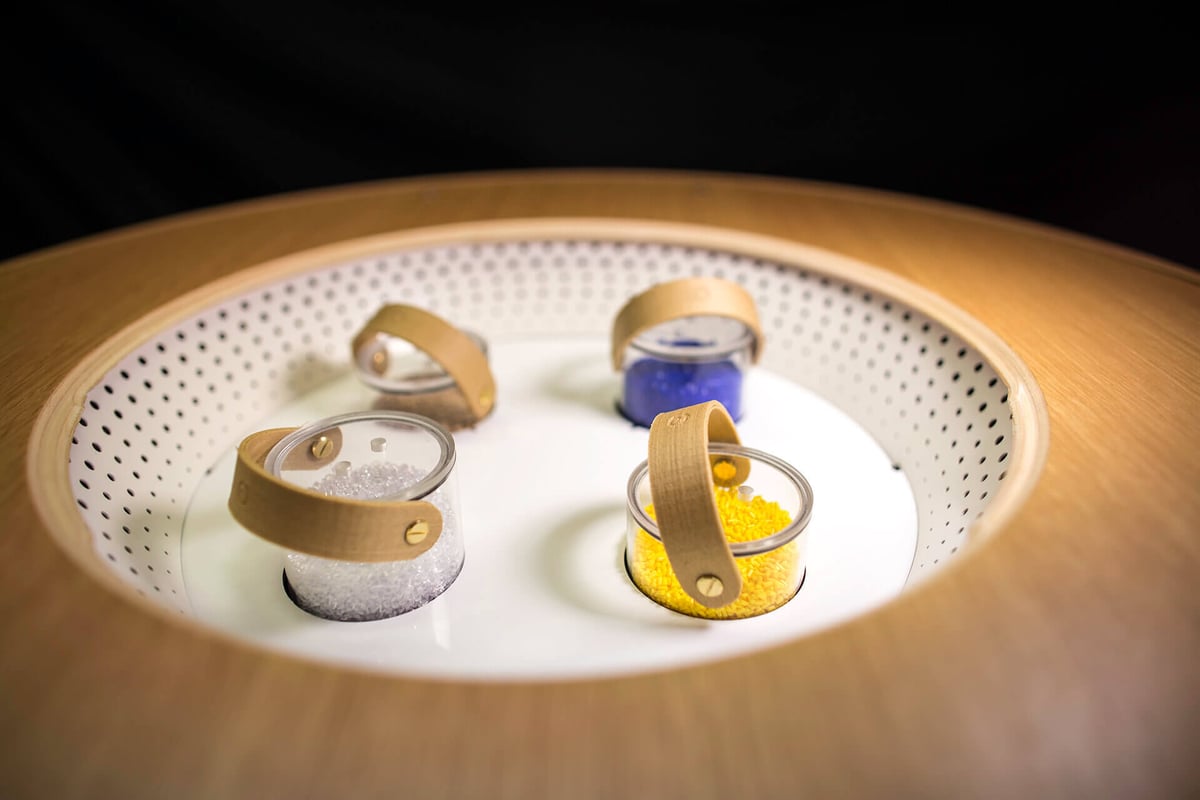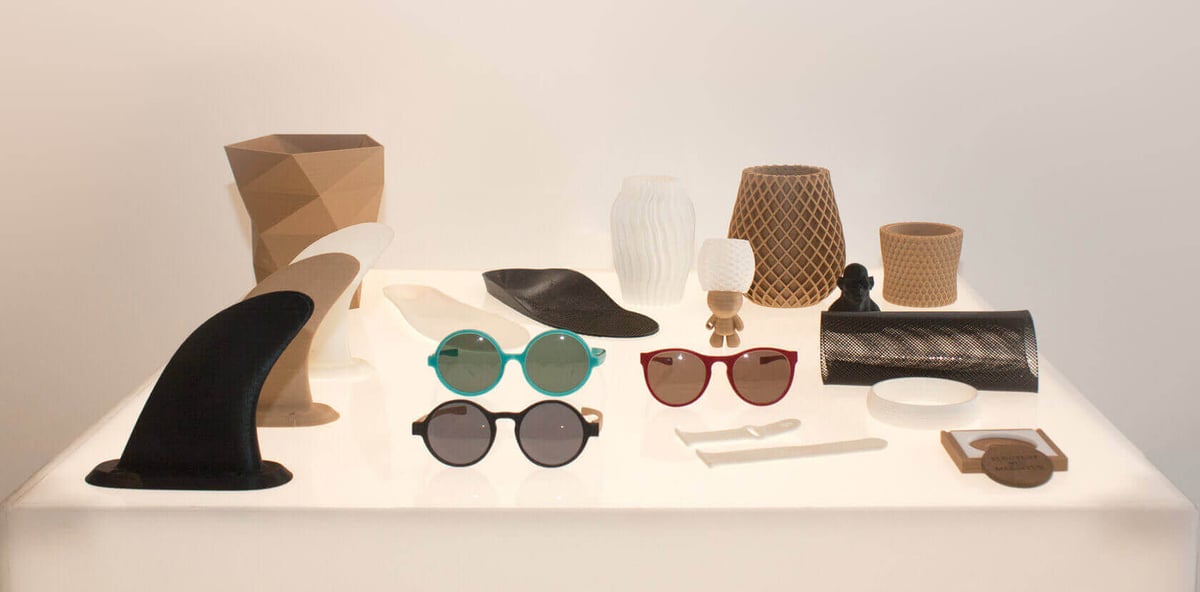French company Pollen drops the curtain on Pam, a sophisticated multi-material 3D printer — but this innovation comes with a hefty price tag.
New 3D printer announcements are all the rage at the moment; in the space of several days we’ve seen announcements for the Zortrax M300, the Sharebot Voyager WARP and the Leapfrog Bolt, to name a few.
And here’s the capper to a busy week: French additive manufacturing company Pollen has announced Pam, a multi-material 3D printer with a 40 micron printing resolution.
The new machine is targeted squarely at the professional sector (and their corresponding deep pockets), and is able to mix four different materials to create objects with different properties.
Using this technique, within the one object you could conceivably weave together properties that solid, flexible, conductive, and so forth. An example would be a pair of polished sunglasses, with frame, lenses and hinges printed in a single piece.
The printer seems to be a Delta FDM design, but the separate printing materials are fed to a single extruder as pellets rather than filament. Here’s a teaser video with some high-def slow-motion action.
Warning, sparks will fly:
Pam is a Long Game, Big Investment Type Deal
Pollen vouch that Pam is the result of 5 years of research and development, and it shows in the design and detail of the final product.
The machine is encased in an elegant wooden veneer. And loading it with material seems to be a simple proposition, slotting in capsules filled with pellets of thermoplastics, silicones, composites, and filled materials.
The maximum temperature of the nozzle is 350°C, which should ensure that it can handle current and future generations of material.

Pam works over Wi-Fi or Ethernet, and can be managed using a web browser. As such, it’s capable of printing objects remotely, but because the printing software is embedded into the printer, it can also be operated without connecting it to a computer at all.
Ah, but let’s talk about the price. With a planned shipping-date of April 2017, pre-orders start at $9,000 (€8,000) not including delivery and VAT.
Incredibly, that’s just an introductory price, where Pollen plans to sell it for $18,000 (€16,000) after this initial batch of printers have been delivered.
At that price, potential customers would have to think long and hard about the long-term dividends of using a Pam. Is there a specific scenario where a multi-material 3D printer offers greater cost savings, time efficiencies and competitive advantages than using a conventional 3D printer?
Pollen seems confident that there will be. Let’s hope that they’re right.

License: The text of "Pam is a Multi-material 3D Printer that’s Crazy Expensive" by All3DP is licensed under a Creative Commons Attribution 4.0 International License.